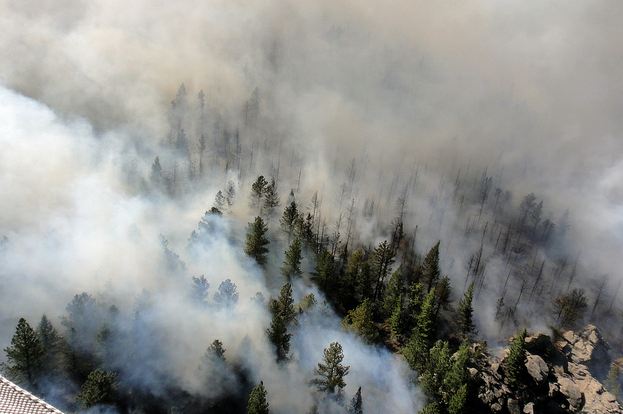Anheuser-Busch and the 15 craft breweries in Fort Collins, Colorado depend on clean water to produce their beer.
In 2012 the High Park Fire west of the city burned 87,000 acres and 259 homes. One resident was killed, $38 million was spent on suppression, and the insured losses totaled $113 million. But much of the damage occurred just after the fire was contained when summer thunderstorms washed ash and debris into the Cache la Poudre River, turning it black. Fort Collins and Greeley obtain much of their drinking water from the river and temporarily turned off their water intakes. Flooding in 2013 after 15 inches of rain in Rist Canyon created more problems.
Anheuser-Busch is contributing $110,000 to help The Nature Conservancy protect the watershed in the Poudre River watershed. The funds will enable the organization to improve forest conditions on a demonstration area, allowing for treatment testing and informing future larger-scale restoration projects to reduce catastrophic fires and improve water security for the people of these communities. The plans include thinning and prescribed fire.
Below is an excerpt from an article at Mother Nature Network:
…The Nature Conservancy’s prescription instructs those who wield the chainsaws on which trees to leave untouched and which trees to cut down. For example, old trees, trees with flat tops, and those that have visual nesting cavities or favorable conditions for nesting are left alone. Old species are left untouched, too. Trees are left in small clusters to give safe haven to squirrels who might become prey if they came down on the ground to get to their next tree.
The trees that are the most undesirable are Douglas firs. The prescription calls for removing 90 percent of them that are less than 10 inches in diameter. Why do Douglas firs get the chainsaw? The same thing that makes the species great-looking Christmas trees also makes them “ladder fuels” in the forest. They carry fire from the grass into the treetops via their low branches. Once the fire gets up into a tree, it then gets into other trees, even those that are adapted to fire with a lack of low branches and thicker bark. Before humans started suppressing forest fires, Douglas firs would be taken out in natural low-intensity fires and the more fire-intolerant trees would often remain. But now, it’s not unusual for all trees to burn in a forest that has become overly dense…








